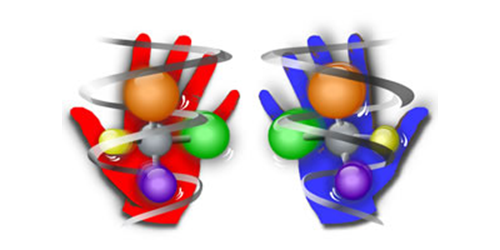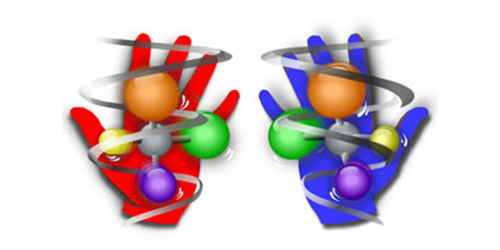Noise Gives Biology a Hand
Many molecules essential to life come with a given handedness, or chirality: amino acids are always left handed, while sugars are always right handed. Why this “homochirality” exists, however, is a mystery, since it takes a similar amount of energy to form left- and right-handed versions of a molecule. Farshid Jafarpour and colleagues at the University of Illinois at Urbana–Champaign have now suggested that the asymmetry might be the consequence of noisy fluctuations accompanying the chemical reactions that produce these biomolecules.
According to current theories, homochirality emerged through several steps. First, some environmental asymmetry—arising, for instance, from the Earth’s rotation or exposure to circularly polarized light—created a small imbalance between the two species. The imbalance was then amplified as each chiral species catalyzed its own production (through self-replication). However, these two steps are not sufficient to explain biology’s perfect selectivity, so researchers have hypothesized that a chiral species becomes dominant by also inhibiting the formation of the other. But recent experiments cast doubts on this hypothesis by showing that two chiral variants of RNA can coexist.
Jafarpour and colleagues provide a simpler explanation that does not rely on cross-inhibition. They analyze a set of self-replication reactions that produce the two chiral species and calculate how their ratio evolves in the presence of concentration fluctuations—a form of noise arising because chemical reactions are probabilistic processes. Their calculations show that, even if the two species were initially equally probable, fluctuations move the system inexorably toward a homochiral state. Once reached, this state is stable because self-replicating reactions can only produce molecules with the same chirality.
This research is published in Physical Review Letters.
–Matteo Rini





